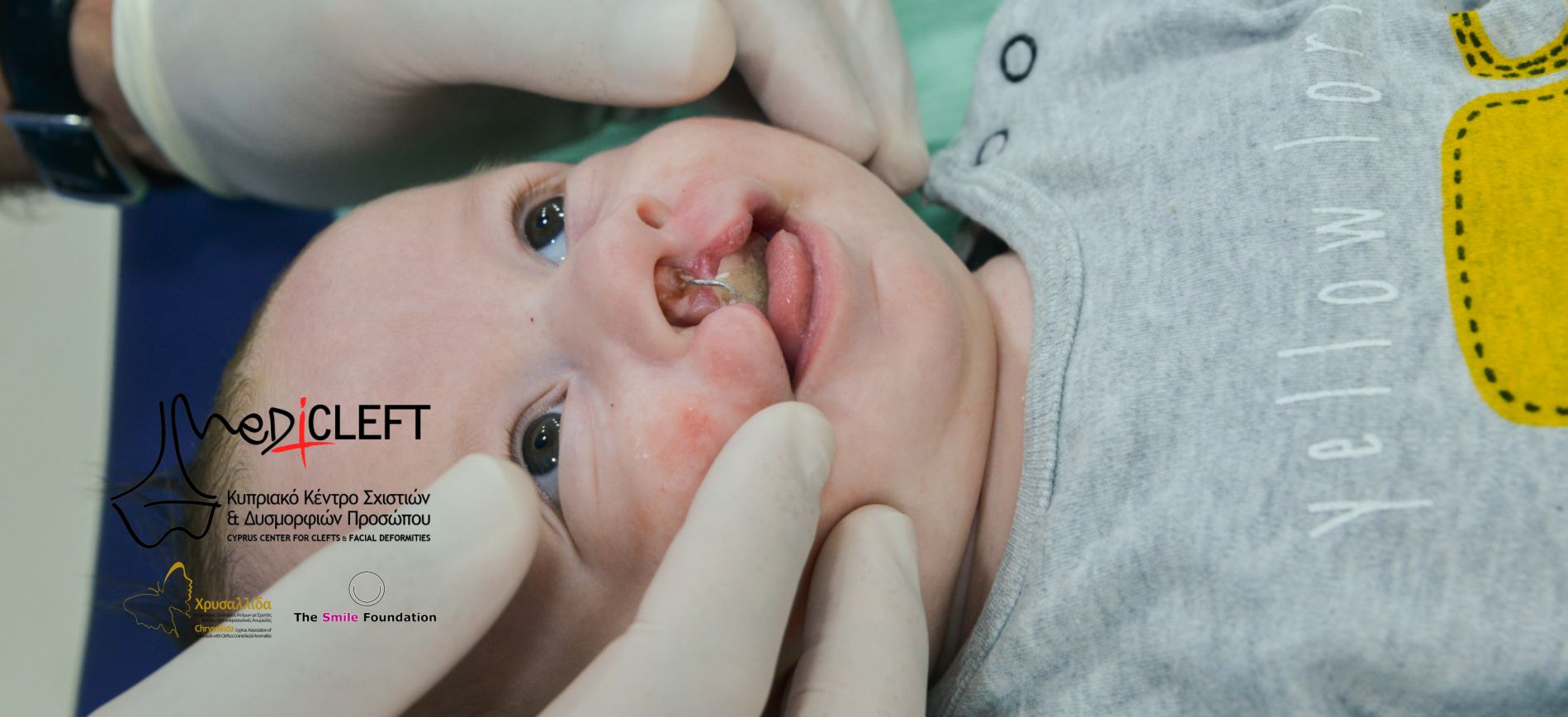A child with cleft will undergo treatment from infancy to adulthood. Early intervention is crucial to the child’s functional integrity and appearance for the rest of his life. The child should be observed continuously and at frequent intervals. The lack of continuous observation can result in of problems with serious consequences, which could have been successfully treated if they had been diagnosed and treated promptly.
Dealing with cleft needs time and patience, but most importantly needs handling by a TEAM of Specialists who have the required education and experience that is defined by EUROCLEFT, and the American Cleft Palate and Craniofacial Association, in which the Cyprus Center for Clefts and Facial Deformities, MEDICLEFT is a member. To achieve the best aesthetic and functional results, a continuous and uninterrupted monitor of the child from birth until puberty is essential. A series of interconnected surgeries are scheduled, based on a defined and carefully designed timetable. The fragmentary treatment can only lead to bad results, whose correction is rarely completely satisfactory and require additional procedures and unnecessary suffering by the child and the family.
GENERAL PRINCIPLES OF SURGICAL INTERVENTION
The treatment of a child with cleft should be undertaken by a TEAM of Specialists that is trained and experienced in the entire spectrum of the treatment of clefts. In experienced hands, the total stay of a child with cleft in the hospital, until the completion of treatment, is not more than a week to ten days, since each hospitalization for surgery is from one to three days, with few exceptions.
The timing of cleft surgical treatment varies from patient to patient.
Our TEAM preference is presented:
Correction of cleft lip starts at the age of three months if it is full. During the operation two flaps are created from which one rotates and the other is promoted in the void which is created by the rotation. The scars that result follow the natural direction of the filter of the lip and more often they become nearly invisible over time.
In bilateral cleft the problem is much more complex. The principles of recovery are the same as in the cleft lip, but two or three stage surgeries are needed, depending on the cleft. In the first stage the lip is corrected, while in the next the columella of the nose which is almost always short will be elongated. Presurgical orthopedics (NAM) used by the TEAM orthodontist, helps a lot the columella to elongate before surgery.
Correction of cleft palate is usually done during the twelfth month of age and includes correction of the soft palate (ie the back part of the palate that moves and includes the muscles of the palate) and the hard palate up to the area of the alveolus (where teeth grow).
The restoration of the alveolar area is done later, usually at the age of 9-11 years old. The surgical closure of cleft palate plays a major role in the subsequent growth of the maxillary complex and speech development. In cases where there is a cleft in the area of the alveolar crest, a prerequisite for the completion of the orthodontic treatment is to have a bone graft in the cleft region, i.e. the gap is filled with bone that is usually taken from the pelvis, so that the permanent cuspid can be erupted and an ideal dental arch is created for correct occlusion and a beautiful smile. This operation is usually done when the child is around 9-11 years of age. If there is a bilateral cleft, there is a possibility that the graft cannot be done from both sides simultaneously, and two sequential operations will be required.
See the timeline of the “treatment plan” here
If you have any questions or need additional information about the treatment of clefts, please contact + 357 25735050 or send us an e-mail at info@medicleft.com.
The TEAM of Scientists of the Cyprus Center for Clefts and Facial Deformities, MEDICLEFT, is at your disposal.

